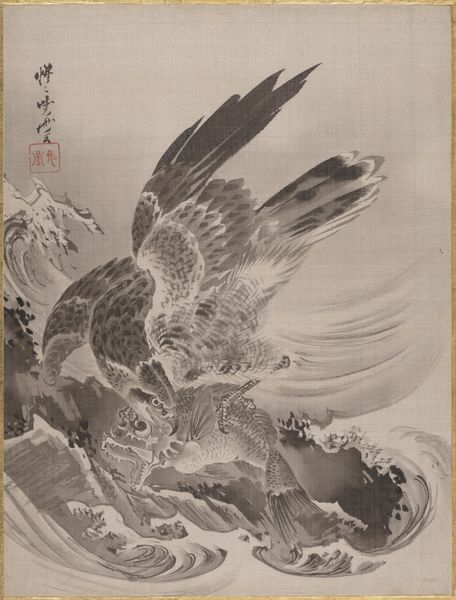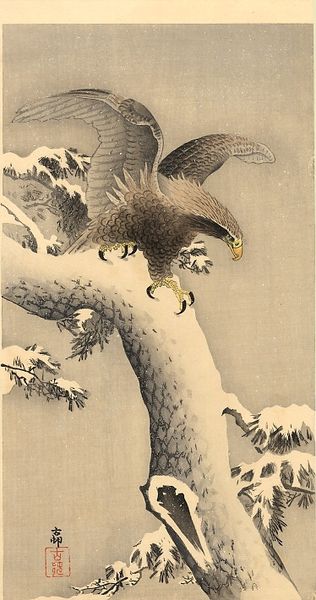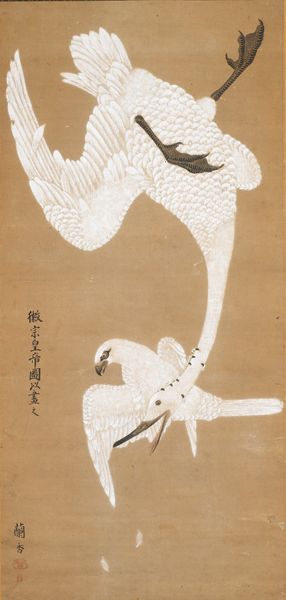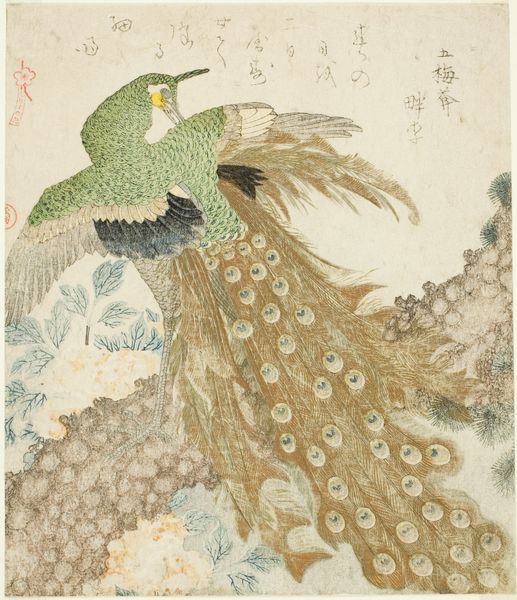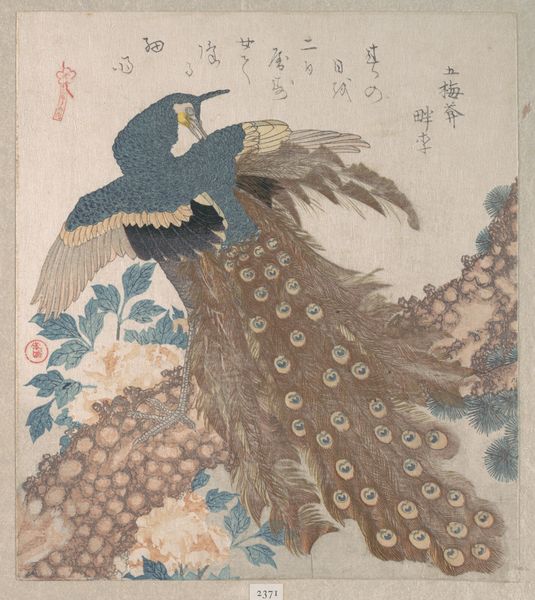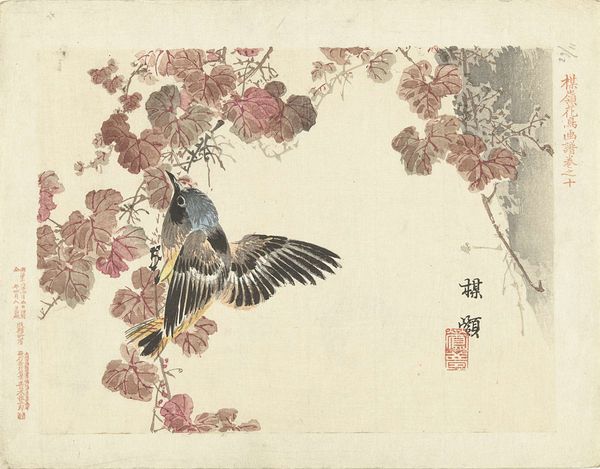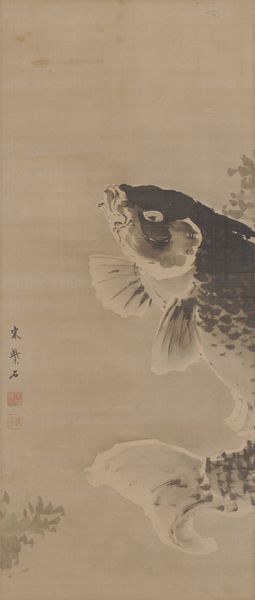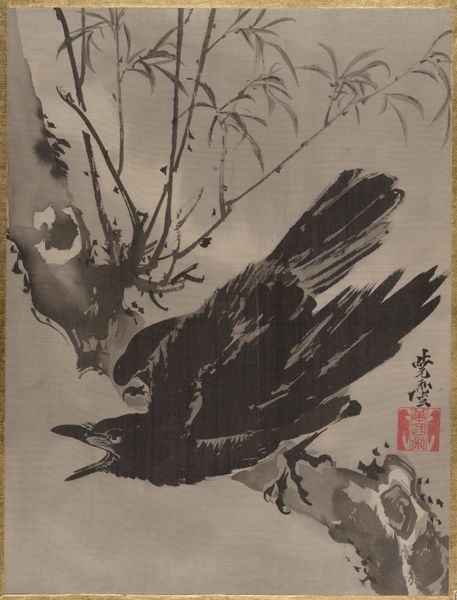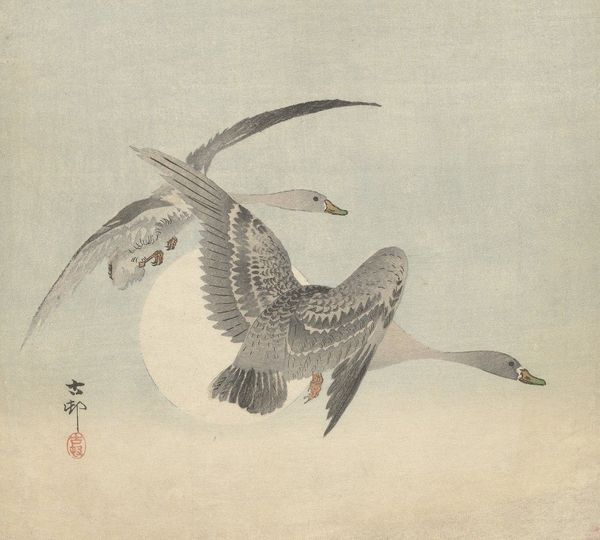![God of Wind caught by a hawk [left of the pair Gods of Wind and Thunder] by Satake Eikai](/_next/image?url=https%3A%2F%2Fd2w8kbdekdi1gv.cloudfront.net%2FeyJidWNrZXQiOiAiYXJ0ZXJhLWltYWdlcy1idWNrZXQiLCAia2V5IjogImFydHdvcmtzL2U5YzkwYmEwLTRkMDgtNDI0OS1iZTAwLWY1YTljNjFmY2QxZi9lOWM5MGJhMC00ZDA4LTQyNDktYmUwMC1mNWE5YzYxZmNkMWZfZnVsbC5qcGciLCAiZWRpdHMiOiB7InJlc2l6ZSI6IHsid2lkdGgiOiAxOTIwLCAiaGVpZ2h0IjogMTkyMCwgImZpdCI6ICJpbnNpZGUifX19&w=3840&q=75)
God of Wind caught by a hawk [left of the pair Gods of Wind and Thunder] c. mid 19th century
0:00
0:00
painting, watercolor, ink
#
painting
#
asian-art
#
landscape
#
ukiyo-e
#
fantasy-art
#
japan
#
figuration
#
watercolor
#
ink
#
underpainting
#
line
#
watercolour illustration
#
watercolor
Dimensions: 42 5/16 × 16 in. (107.47 × 40.64 cm) (image)85 × 20 1/4 in. (215.9 × 51.44 cm) (mount)
Copyright: Public Domain
Satake Eikai painted "God of Wind caught by a hawk" with ink and color on silk. Here, the wind god, typically a symbol of chaos and untamed natural forces, finds himself captured, his flowing robes and wind bag clutched in the talons of a hawk. This scene echoes the ancient motif of the triumphant animal, a symbol of primal power seen across cultures, from the eagle of Rome to the dragons of the East. The hawk, in many traditions, embodies keen perception and control. Consider, though, how the depiction of the wind god has evolved. In earlier forms, he was a purely destructive force, a whirlwind of divine anger. Yet here, he is vulnerable, almost pitiable, suggesting a shift in our understanding of nature's power. The image stirs a powerful psychological tension: the wild, untamed force subdued. This dynamic reflects our ongoing struggle to reconcile humanity's place within the natural world. The cyclical nature of power is emphasized by the hawk’s dominance. An eternal return of dominance, a cycle of nature and power.
Comments
minneapolisinstituteofart almost 2 years ago
⋮
This humorous pair of scrolls shows the gods of wind and thunder being ambushed by worldly creatures. On the left, the Wind God, identifiable by the deflated wind-producing bag at his side, has been captured by a swooping hawk. On the right, the Thunder God has abandoned the drums he uses to produce the sound of thunder while attempting to escape the pincers of a crab. This lively theme was popular with the Kanō painting school during the Edo period, so the fact that Eikai, who studied under literati painter Tani Bunchō, took on this subject is rather exceptional.(2013.30.19.1-.2)
Join the conversation
Join millions of artists and users on Artera today and experience the ultimate creative platform.
